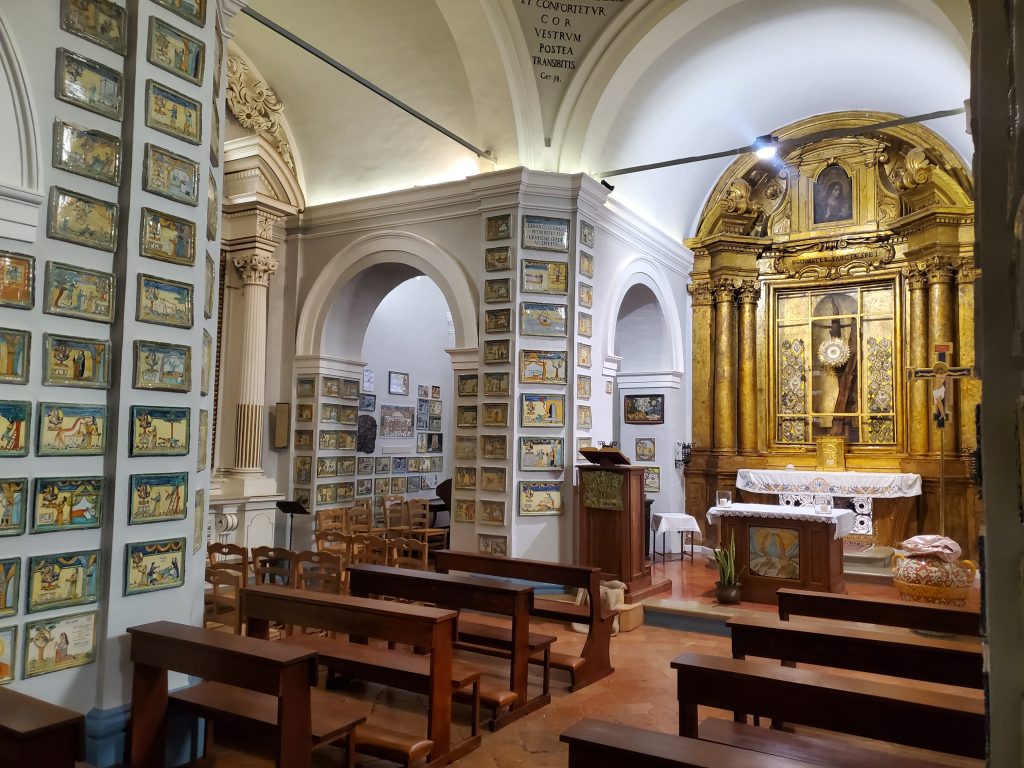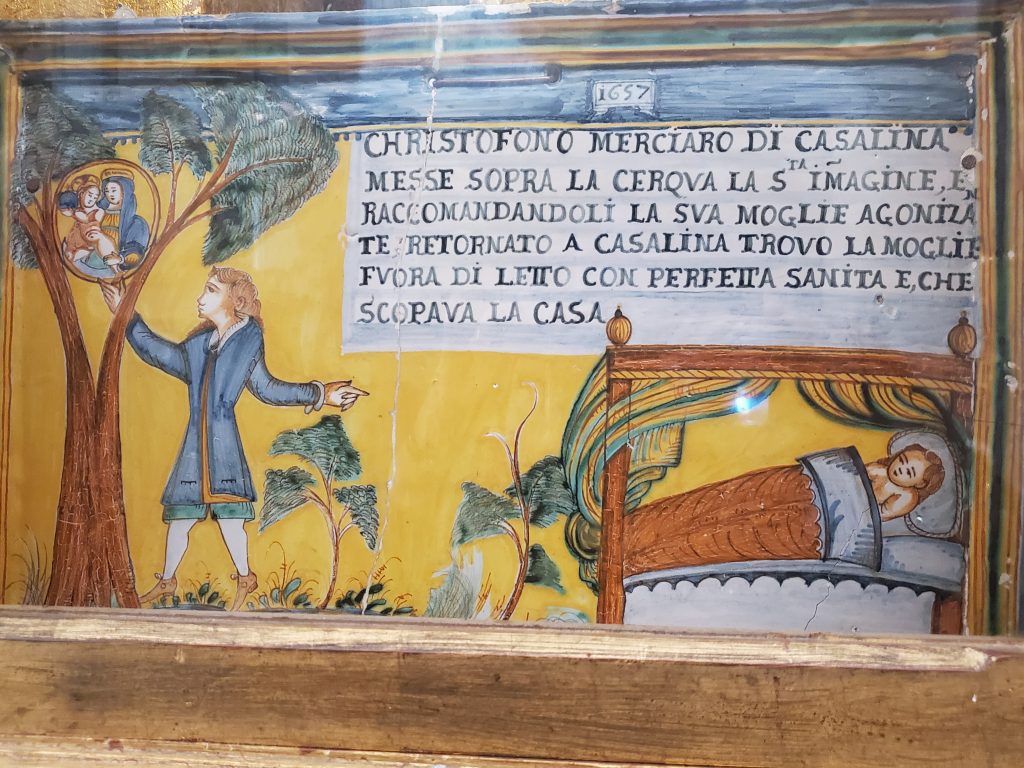
Anyone who has ever visited European churches, especially churches in Italy, is familiar with the framed silver images of the Sacred Heart of Jesus that are often found displayed on the walls of these holy places. In some of the churches or shrines, the walls are practically covered with them. But what some might not realize is that these images are meant as an offering of thanksgiving for prayers answered as well as a reminder to pilgrims and others going to Mass or visiting the churches not to lose hope and to always remember the goodness of God. It’s about expressing a strong attitude of gratitude.
When my husband, Deacon Dominick, and I are not leading pilgrimages in Italy, the country of our ancestry, we spend a great deal of time in the central region of Umbria. This area is noted for shrines dedicated to some of the Catholic Church’s most prominent and popular saints, including St. Francis and St. Clare of Assisi, as well as Blessed Carlos Acutis and St. Rita of Cascia. St. Benedict and his sister St. Scholastica, although buried in southern Lazio, at Abbey of Monte Cassino, were born in the Umbrian town of Norcia. Umbria is also home to the stunning Etruscan town of Orvieto, which houses the Eucharistic miracle of Bolsena, the same miracle that led to the Solemnity of Corpus Christi.
Needless to say, as Catholics who love to visit and pray at these sacred spaces, we have found that Umbria has a lot to offer. But we were not familiar with the Sanctuary of Madonna del Bagni or Madonna of the Bath. The roots of the name are unknown but what we do know is that you will discover, once you put Madonna of the Bath on your Italy pilgrimage itinerary, a beautiful sanctuary built around a love story. And it is a love story not only between a husband and wife, but between the Blessed Mother and her many grateful children.
We would often see small signs mentioning Madonna del Bagni on the side of the autostrada, or highway, on the way to or from Assisi or Perugia, but didn’t give the sight much thought — that was, until we were encouraged to visit it by one of our pilgrimage guides. So, this past November, after the conclusion of a recent tour, we decided to take the guide’s advice. Being that it is quite small compared to other well-known pilgrimage attractions, we didn’t know what to expect, but we soon learned it is indeed worth the visit.

Madonna del Bagni is tucked away in the hills south of the lovely village of Deruta, famous for its incredible ceramics. The sanctuary was built in the 17th century not long after a miraculous event in the mid-1600s. According to tradition, a Franciscan priest found a broken fragment of pottery in the woods. The fragment was decorated with an image of the Blessed Mother and the Infant Jesus. To protect the image, the priest decided to place the fragment in the branches of an oak tree. Eventually, it fell to the ground. It was a local merchant, Cristoforo di Filippo, while on his way to work in Deruta, who discovered the shard and decided to nail it to the tree for safe keeping. Little did that merchant know that he would, one day, just a few years later, return to that tree to ask for the intercession of our Blessed Mother, after his wife became extremely ill. When he arrived home, the very same day he prayed for his wife, he found that she had fully recovered. To express their gratitude, the couple then commissioned an artist in Deruta to create a ceramic plaque in honor of the healing.
And thus began the devotion to Madonna del Bagni. The same tile was placed behind the altar of the church with the oak tree and can still be seen today. But what makes this church so special is not just the story of the di Filippos and their tile, but the literally hundreds of other tiles covering the walls. Some 700 of them have been made with great detail over the centuries by the loving hands of Deruta-based ceramicists who were commissioned by the faithful who believe serious injuries were prevented or their very lives saved after asking for the intercession of the Madonna of the Bath. The plaques depict dramatic images of near-fatal calamities, such as coming dangerously close to being mauled or trampled by wild animals, or being saved from a car accident, an earthquake or a fire. As one visitor described it in a blog, it is as if you are visiting a gallery of human existence spread out over several hundred years. It’s humbling and extremely moving to see the gratitude of fellow believers depicted in such creative and colorful artistic expressions. Continue reading at the National Catholic Register.
Note: This article originally appeared in the National Catholic Register on February 14, 2024. Used with permission.